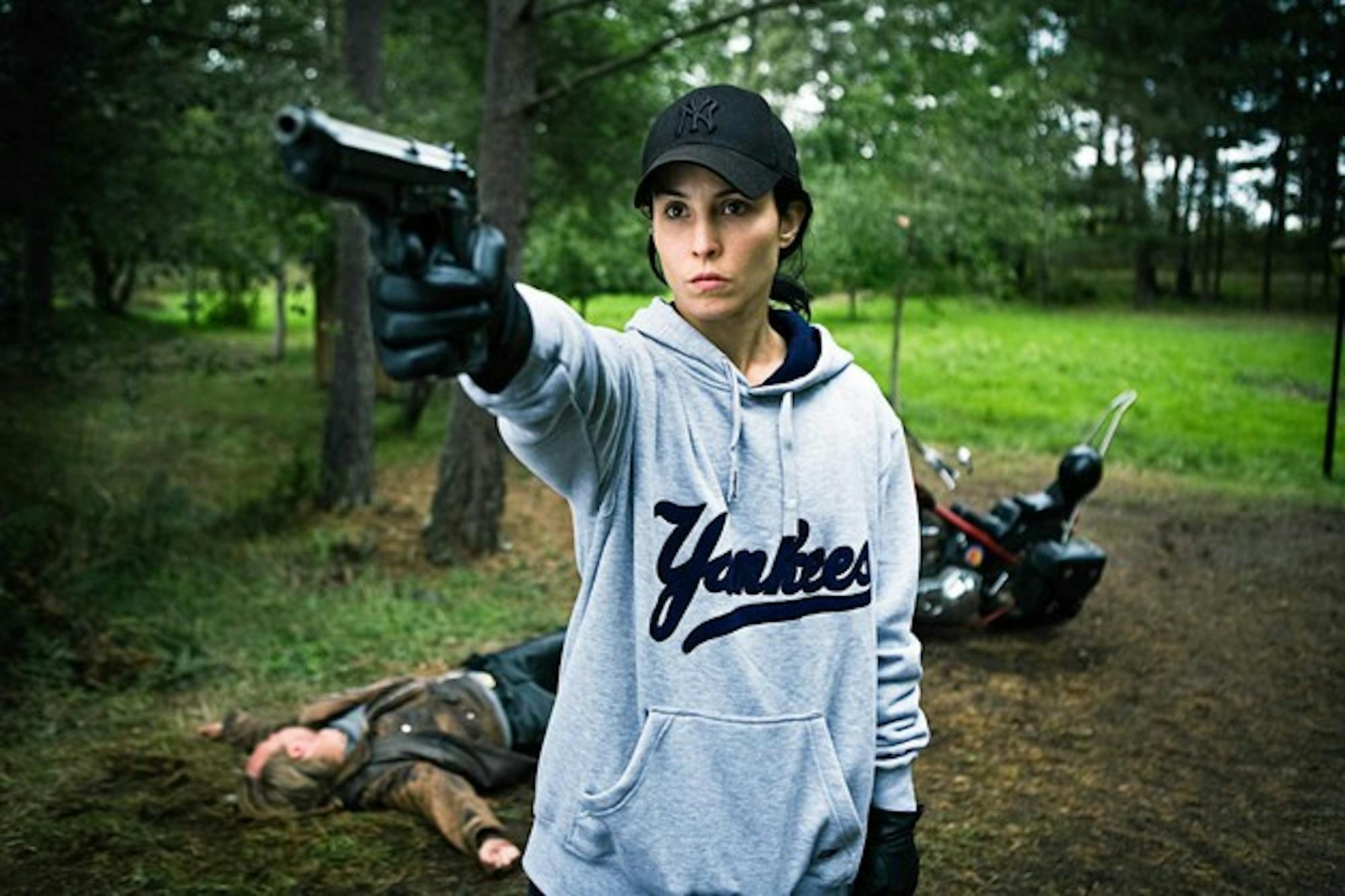"The Girl Who Played with Fire" follows Lisbeth Salander's (Noomi Rapace) efforts to clear her name after she is framed for the murder of two journalists and her legal guardian. She goes into hiding, hoping to find the real perpetrator of the crime and Mikael Blomkvist (Michael Nyqvist), the investigative journalist who met Salander in the preceding film "The Girl with the Dragon Tattoo" (2009).
Unfortunately, the film does not fully live up to the expectations set by the trilogy's first installment "The Girl with the Dragon Tattoo" partially because the plot of the second book is less focused than its predecessor's. And even though the cliffhanger ending of "The Girl Who Played with Fire" will bring viewers back for the trilogy's final chapter, "The Girl who Kicked the Hornet's Nest," this tactic also leaves the second half of the film feeling a bit hollow. Salander is more appealing when pursuing justice for crimes committed against others, as she does in "Dragon Tattoo," than when defending herself, as she is forced to in this film.
Rapace's portrayal of Salander is easily the best part of the film, as she successfully captures her character's intense and frightening energy. Nyqvist also does a decent job, but as in the book, the audience is left wondering why Salander has any interest in the middle-aged man.
Another draw of the film is the way it differs from traditional American action flicks. The camera lingers on the characters and action scenes build tension without constantly cutting from shot to shot. This makes the events captured seem more realistic and the violence much more affecting. Daniel Alfredson's directing is in general well done and keeps the pace of the movie brisk. Moreover, the lack of any recognizable actors or actresses keeps the focus on the characters rather than Hollywood star personas.
"The Girl Who Played with Fire" provides another breath of fresh air in its treatment of women. The film takes to heart the strong feminist slant and focus on crimes committed against women seen in Larsson's books ("The Girl with the Dragon Tattoo" is not the original title of the Swedish book, which is translated as "Men Who Hate Women"). Salander acts as a female action hero without having to resort to "feminine wiles" or excessive cleavage to accomplish her goals. With the exception of one unnecessarily long lesbian love scene that feels out of place, the film otherwise presents its female characters without objectifying them or making them out to be victims. One of the most satisfying fight scenes features a high-kicking Miriam Wu (Yasmine Garbi) who holds her own surprisingly well.
It is no surprise, given the success of Larsson's books and the Swedish film adaptations, that a Hollywood version of the trilogy has already been announced. Unfortunately, many of the elements that make this film enjoyable the longer shots, intense acting and understated humor are likely to be lost in translation. Daniel Craig has been announced as the American film's Blomkvist, and he may overshadow Rooney Mara, the more obscure actress slated to portray Salander.
Apparently, Hollywood has Swedish-remake syndrome. Consider the upcoming October release of "Let Me In," an unnecessary remake of the wonderful Swedish vampire flick "Let the Right One In" (2008). While the remake may provide a few interesting new details, it seems to follow the original too closely and judging by the previews risks mimicking its predecessor too closely. The Swedish interpretation of "The Girl Who Played with Fire" doesn't leave much for an American director and cast to improve upon either.
The three books, which comprise Larsson's Millenium Trilogy, are notable as a cultural phenomenon due to their extraordinary international success. More than 27 million copies of the three published books in the series have been sold internationally, and they have won a variety of crime and thriller awards. The movies have also performed well internationally.
Behind the book's popularity lies another drama. Larsson, a journalist who founded the magazine Expo, died of a heart attack before the publication of any of his novels. Larsson left behind a will, which left all of his assets to a Swedish branch of the Socialist Party that was declared invalid.
His estate was then legally handed over to his father and brother, leaving them with the millions in profits from the books and film rights. This was further complicated by the presence of Larsson's partner Eva Gabrielsson, with whom he had lived for years, but who was left without any legal standing to his estate. Their unmarried status was due in part to a requirement under Swedish law that requires married couples to make their addresses publicly available a problem for Larsson, who was the common target of right-wing and racist groups that Expo worked to uncover. Gabrielsson has had public disputes with Larsson's inheritors on the grounds that Larsson had little contact with his family, and she contends she is better suited to control the representation of his work. Gabrielsson is also reportedly in control of a nearly complete fourth book that follows "The Girl who Kicked the Hornet's Nest."
This ongoing conflict, which is being closely followed by the Swedish press, could eventually provide enough fodder for a movie of its own.




